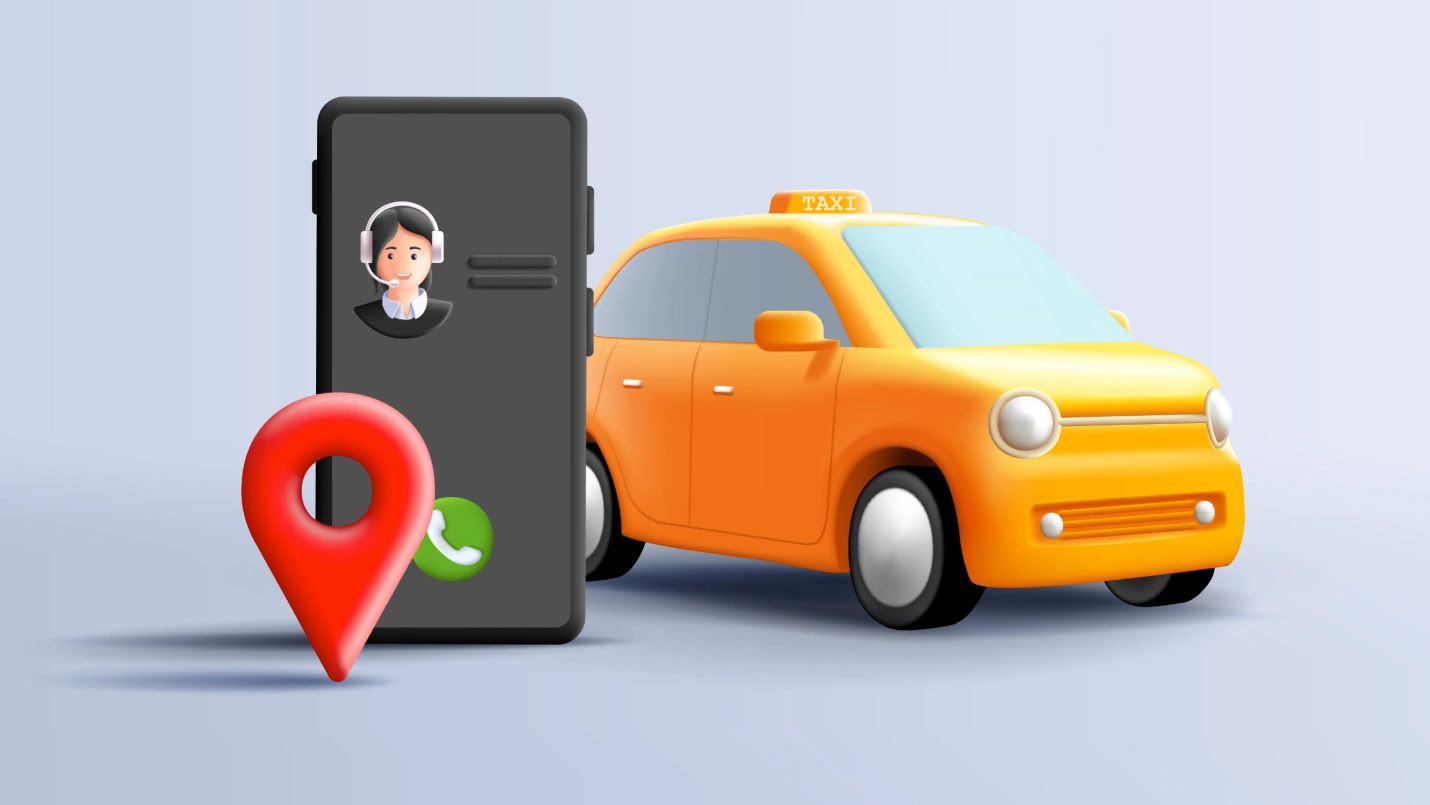Back when you were a kid, your parents told you never to get in a car with strangers. Today? Getting in cars with strangers is a popular business model that’s expected to reach a market value of $218 billion USD by 2025.
The world changes fast, and techies found a solution to the challenges commuters faced when dealing with expensive taxi fares, rude drivers, and shortages where city governments artificially reduced competition by limiting taxi licenses.
Are you a startup and thinking about creating your ride-hailing service to compete with the big guys? That might seem impossible, but small competitors have made a splash in the mobile app development sector, and they did so by focusing on specific markets and tailoring their features to a certain client base.
Ultimately, if you’re thinking about competing with the big ride-hailing services like Uber, you’ll want to study both the David’s and the Goliath’s of this industry. Take careful note of what they’ve done that’s made them successful before building any ride-hailing apps of your own.
When you’re ready to take the plunge, Net Solutions can help you make your rideshare app a reality. For now, here are the 10 best rideshare apps of 2024 and what they have to teach us from a business perspective.
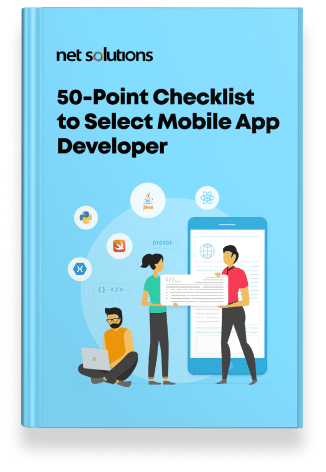
We respect your privacy. Your information is safe.
1. Uber: The Rideshare Giant
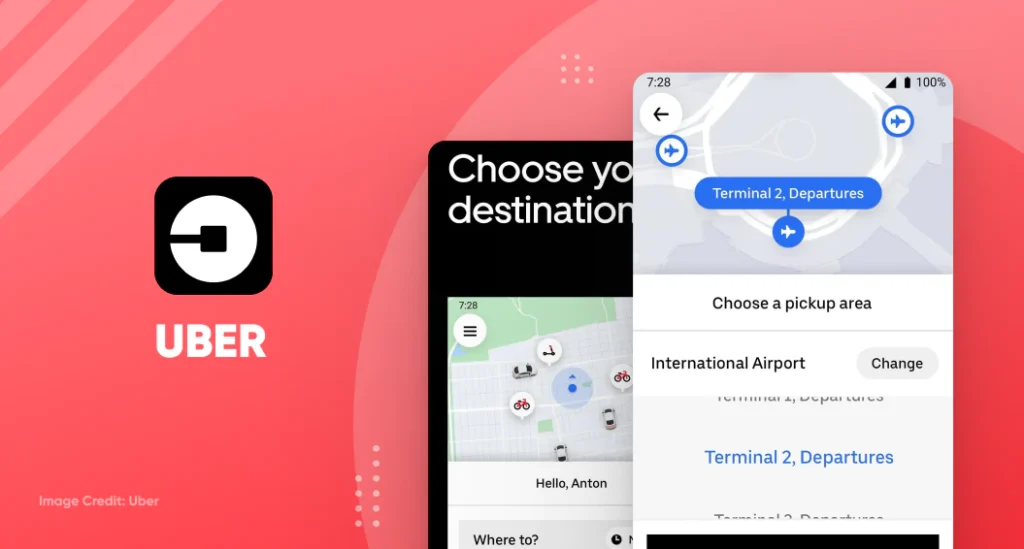
- Android Rating: 4.2
- iOS Rating: 4.7
- Popular for: Multiple-service levels
Uber is a very popular app, headquartered in San Francisco alongside some of the biggest tech firms in the world. They have an estimated 110 million worldwide users, and it’s the rideshare company that led the charge at radically disrupting the transportation industry.
Many refer to their business model as “Uberization,” which describes the commoditization of existing service models with the help of mobile technology. For example, companies now offer food delivery, shopping, housekeeping, and a million other services straight from an app – take Uber, for example, when it ventured into the food delivery app segment through ‘Uber Eats.’ It paved the way for this change.
Uber continued its trend of innovation by offering UberPOOL, which allows users in some areas to get cheaper rides by sharing their ride with other passengers—letting the system match riders taking a similar route. This not only proved popular as a cost-saving technique, but it allowed riders to reduce their carbon footprint.
Driver-Oriented Features:
- A passenger-rating system to identify difficult riders (and remove them from the platform if necessary)
- Special accommodations for hearing-impaired drivers
- Bonuses in certain cities based on the number of rides given
- Drivers can opt-out of UberPool, which can make for a better earnings strategy for drivers who aren’t trying to get a bonus by giving more rides
Rider-Oriented Features:
- Scheduling rides in advance
- Opportunity to pay in cash in certain parts of the world where credit cards aren’t as common (great for international expansion)
- Ability to split a fare between friends sharing a ride
- Multiple drop-off points for groups of riders
2. LYFT: Your Friend with a Car
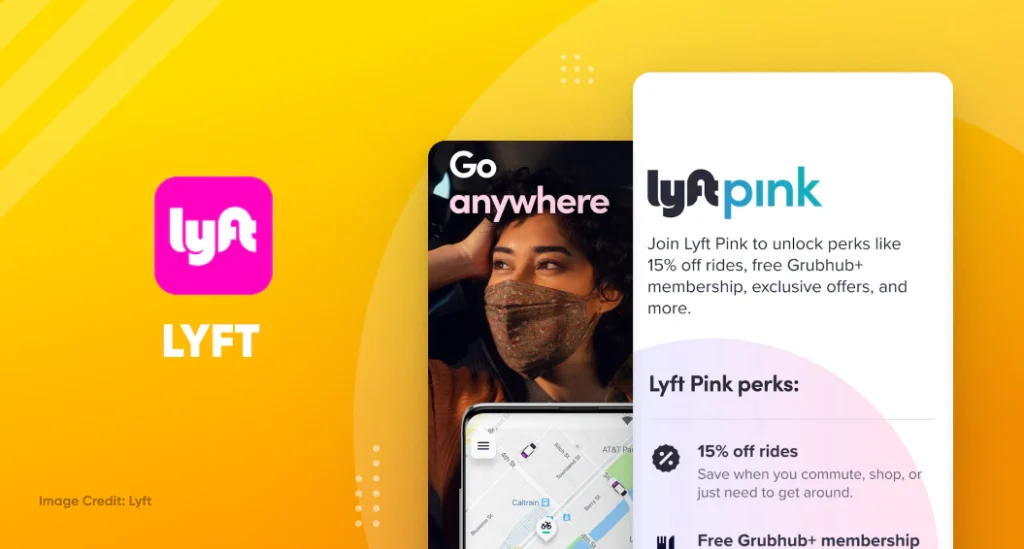
- Android Rating: 4.2
- iOS Rating: 4.9
- Popular for: Affordable rates
Also based in San Francisco, Lyft is a car sharing app that operates in hundreds of cities across North America. The business promises to offer an affordable, memorable, and welcoming rider experience.
Lyft branded itself differently than Uber. Uber calls itself “your personal driver,” while Lyft calls itself “your friend with a car.” And while this difference might seem minor, they actually led to a different experience for riders and drivers. In short, it created a different “culture” among its users.
Lyft passengers and drivers tend to chat more, and in pre-pandemic times, it was customary for Lyft passengers to hop in the front seat. Uber passengers always tended to climb into the back seat, and conversation wasn’t as common.
Apps like Lyft are worth studying because they took a different approach than Uber, and it’s paying off. They seem to have a loyal customer base, and some think they’re set to surpass Uber at some point in the U.S. market.
Driver-Oriented Features:
- A separate app for drivers that includes driver-specific features
- Ability to mark the current ride as the last ride for the day so drivers don’t get an unexpected request they feel compelled to accept
- Opportunity to earn tips from riders (Uber does this as well, but Lyft pioneered it)
Rider-Oriented Features:
- Shared-saver rides for discounts
- “One tap to ride” option for quick requests and pickups
- Drivers have to pass through background checks to ensure safety
- “Lyft Amp” device—a glowing Lyft sign—helps riders find their drivers at night
3. GoJek: Going Beyond Rideshare
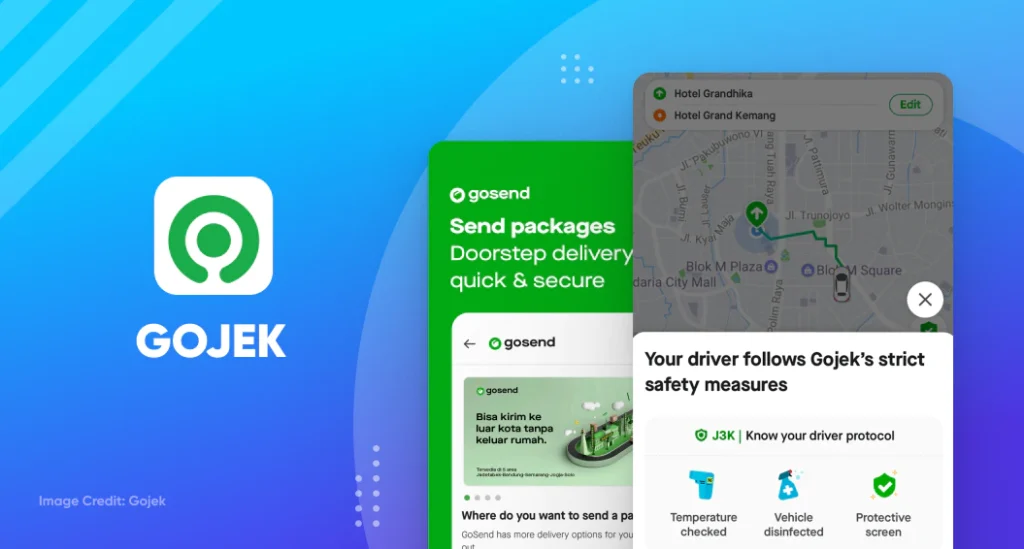
- Android Rating: 4.5
- iOS Rating: 4.2
- Popular for: A variety of services, from rides to delivery to moving heavy items
GoJek is a rideshare app, but it’s not just a rideshare app. Active in 4 countries, GoJek uses its platform (which consists of 20 different apps) to:
- Connect drivers with riders
- Allow people to ride on the backs of motorcycles
- Deliver food and other goods from local merchants
- Help customers move heavy items
- Perform a wide variety of additional tasks
Driver-Oriented Features:
- Health insurance for all drivers (Uber and Lyft employees are independent contractors, which means they have limited access to employer-based healthcare plans in the U.S.)
- Special promotions, including discounts on groceries, fuel, and more
- Free training to learn English, Business, and other life-changing skills
Rider-Oriented Features:
- Easy payment options
- A variety of transportation options (who doesn’t like riding on the back of a motorcycle?)
- Help with shopping and many other daily tasks
4. Careem: Dominating the Middle East & North African Market
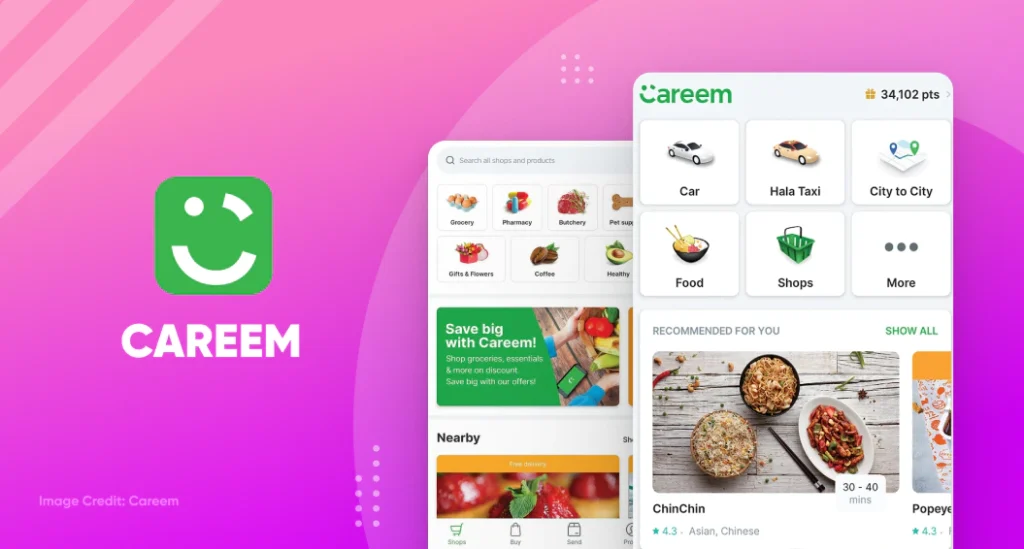
- Android Rating: 4.1
- iOS Rating: 4.6
- Popular for: Users who want rides, delivery, and more
Careem is a Dubai-based service that offers rideshare, food delivery, and more. The company currently operates in more than 100 cities, and they’ve done an excellent job of capturing the market in the Middle East and North Africa.
Careem is a great example of an app that grew by understanding the regions and the cultures it served, making them a case study for anyone who would like to take on Uber in their part of the world. They pride themselves on creating jobs in these countries, along with helping raise money to support over 700,000 refugees through the Careem Rewards donation program.
Driver-Oriented Features:
- Complete flexibility to work when you want to work
- Thorough driver training
- Highly usable app with built-in navigation
Rider-Oriented Features:
- Streamlined payment options
- Option to order food or have someone run errands for you
- Excellent rewards program
5. Ola: Rideshare & Car Rentals
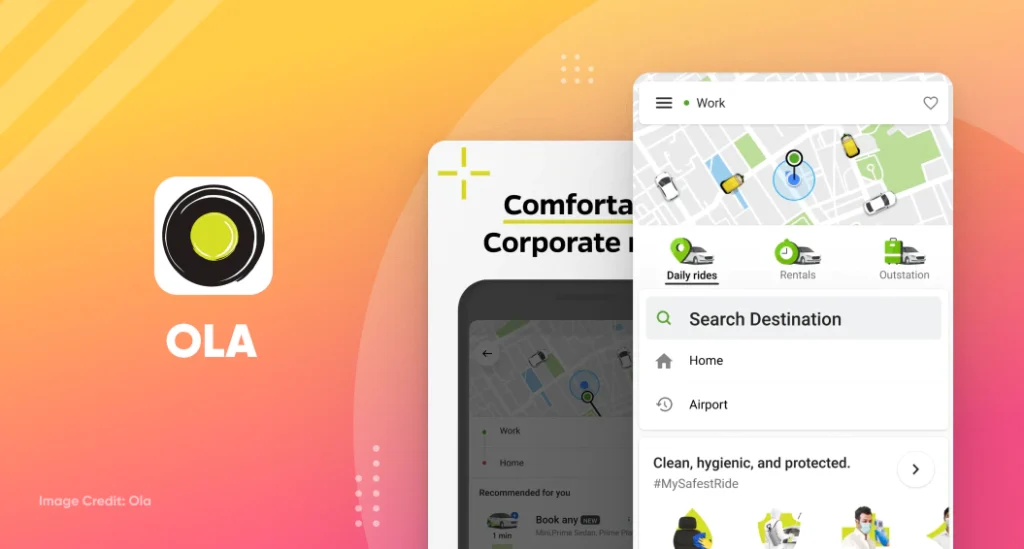
- Android Rating: 4.4
- iOS Rating: 4.7
- Popular for: People who want a variety of options when they travel (rideshare, luxury, rentals)
Ola is an Indian-based cab app/rideshare company that stretches across the globe, with a presence in Australia, New Zealand, the United Kingdom, and other countries. Ola offers rideshare services for any budget, from cheaper rides with riders who share a route to luxury services. It also includes options to rent a car, hire a driver for long trips, and even travel out of town.
Driver-Oriented Features:
- Drivers get paid daily
- 24/7 live support
- Option to lease a car for drivers who don’t own one
Rider-Oriented Features:
- A variety of options for travelers
- Comprehensive insurance and roadside assistance for renters
- In-cab entertainment options (e.g., music, videos)
6. Via: The Smaller Alternative
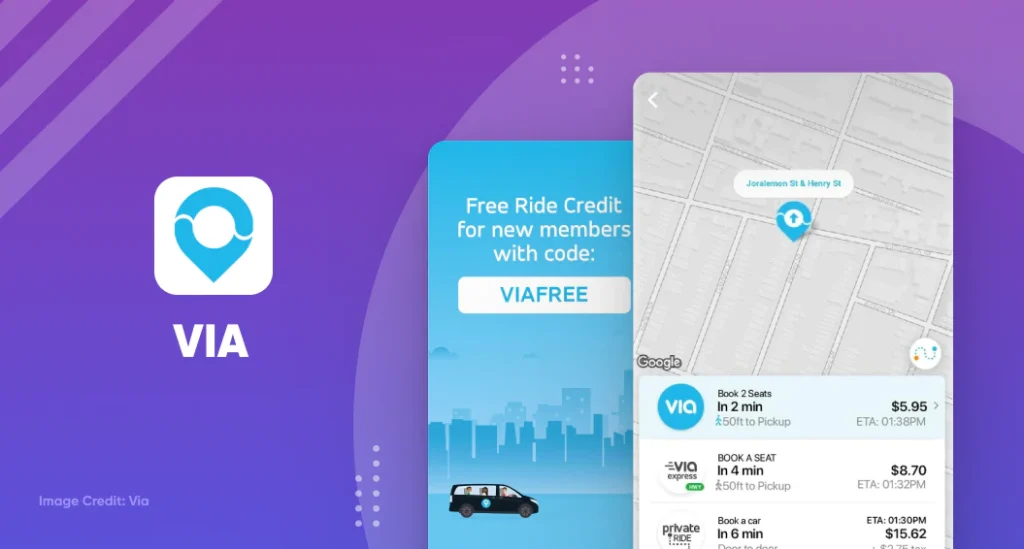
- Android Rating: 4.2
- iOS Rating: 4.2
- Popular for: Dedicated ridesharing
Headquartered in New York, Via has spread its branches across 20 countries worldwide. It runs under its own brand in only six countries, and in the rest of these operating countries, it runs in partnership with the local companies.
The moment a user books a ride, they are instantly connected with the riders traveling along the same route. This car rideshare app takes pride in helping customers share rides to reduce their carbon footprint while saving money.
Driver-Oriented Features:
- Up to $400 signing bonus for drivers
- “Rent a car” system available for drivers who can’t afford a car but still want to earn
- Flexibility to drive whenever it’s convenient
- Via only takes a 10% commission from drivers (compared to Uber’s 25% fee for each ride)
Rider-Oriented Features:
- Affordability
- Corner-to-corner pickups for a faster commute
- Availability of real-time customer support
- Refer friends and get free ride credits
7. BlaBla Car: Share Your Commute
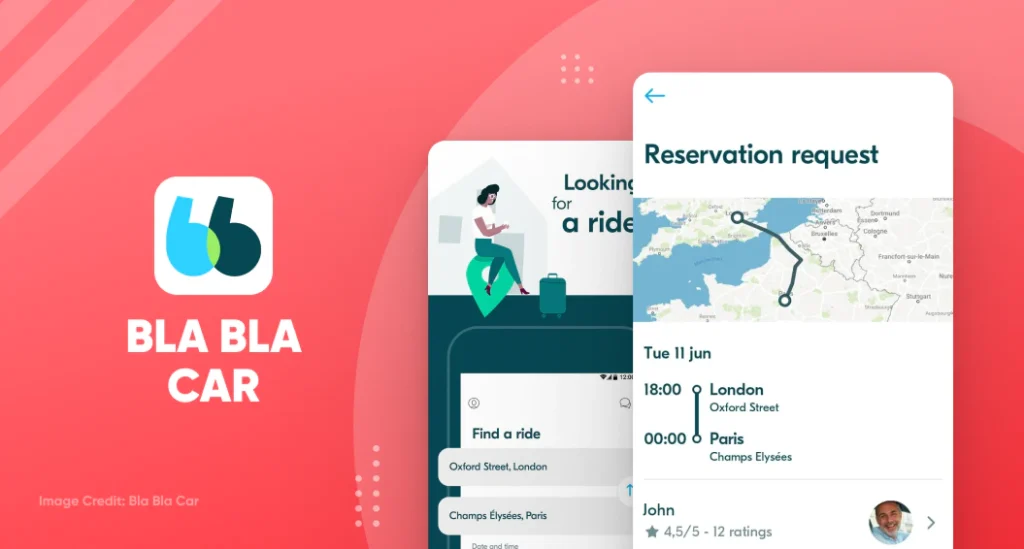
- Android Rating: 4.4
- iOS Rating: 4.5
- Popular for: Same route ride sharing
BlaBla Car has a unique business model. Rather than focusing on full-time drivers, anyone with a car can list their vehicle on the app and identify their route. If any passenger wants to join them, they can request a ride and share the expenses.
BlaBla receives a 12% commission for every successful booking. It is a great app for saving time and money, and it’s great for the environment.
Driver-Oriented Features:
- A rating scale for drivers: “Bla” for the quiet ones, “bla bla” for chatty drivers, and “bla bla bla” for the ones who just can’t shut up
- Easy to post a trip in seconds
- Drivers have the power to decide who rides with them
Rider-Oriented Features:
- Book a ride that’s affordable and safe
- Ability to book last-minute seats if available
- Women drivers can travel with the “women only” option for their safety and comfort
8. Bridj: Moving Large Groups
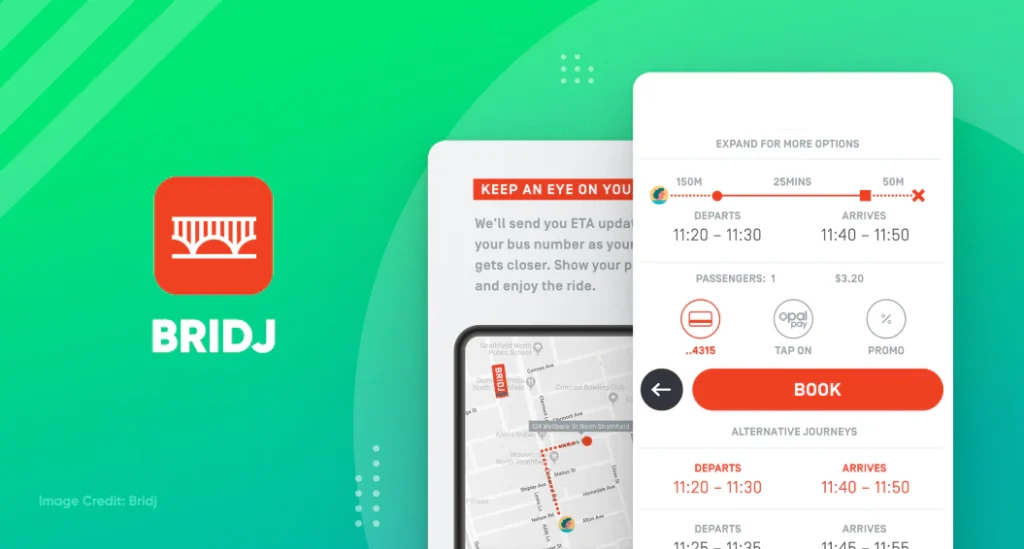
- Android Rating: 3.4
- iOS Rating: 3.6
- Popular for: On-demand public transport
Trying to move a large group of people for a big event, field trip, or some other purpose?
Bridj is an Australian rideshare service that chose to go big. They chart buses and vans to transport groups of people—and everything is managed from the app.
Driver-Oriented Features:
- Tablet access to track passenger bookings
- Training provided by Bridj team
- Drivers have access to a dedicated app
- Easy routing with turn-by-turn navigation
Rider-Oriented Features:
- Ability to make payments through credit cards
- Provides walking directions to pick-up points
- Availability of facilities like free Wi-Fi and USB charging
- Special access for disabled riders
9. GoKid: Where Kids can Carpool Too
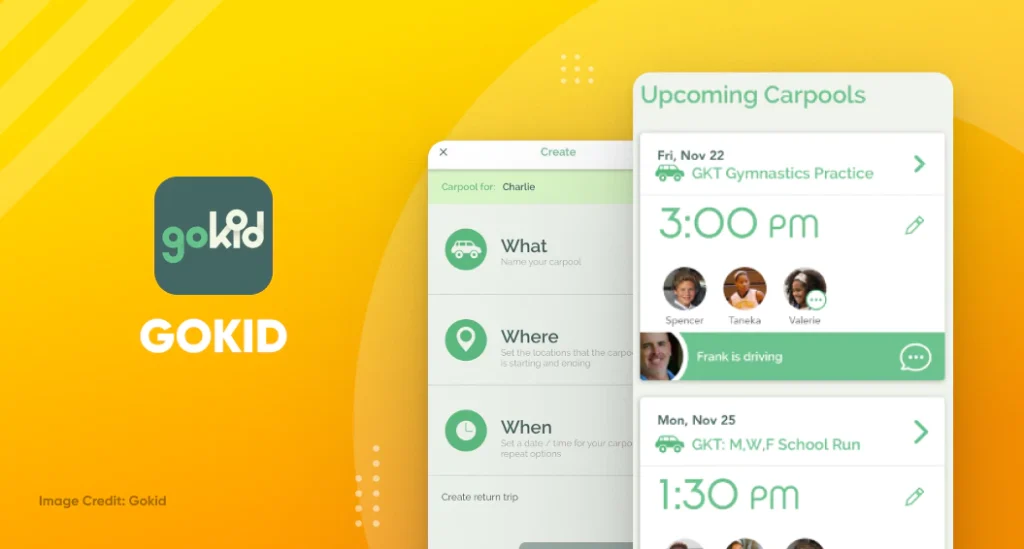
- Android Rating: 4.1
- iOS Rating: 4.2
- Popular for: Kids carpooling
Headquartered in New York City, GoKid operates in around 25 countries. It’s a great example of a rideshare app that addressed a gap in the market, since Uber and Lyft have some restrictions on giving rides to minors (for liability reasons). It is a great venture that makes life easier for busy parents.
How does it work? Parents take turns driving each others’ kids. The digital platform works safely by connecting parents with families they know in order to reduce risk.
Driver-Oriented Features:
- Optimal route provision for pick-ups and drop-offs
- In-app messaging for updates on the trip
- Ability to invite friends from your contact list
Rider-Oriented Features:
- Parents can track the journey in real-time
- Opportunity to relax on busy workdays
- Works on mutual favors—no payments involved
10. Hitch: Rides between Two Cities
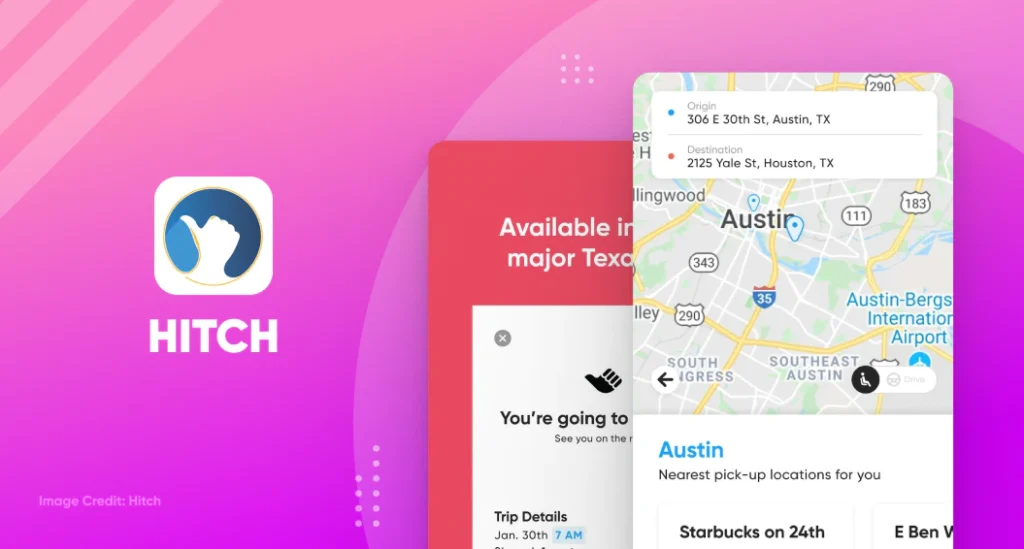
- Android Rating: 2.8
- iOS Rating: 4.2
- Popular for: City-to-City hopping
Hitch offers rideshare services that operate between Austin and Houston, two major cities about a 2.5 – 3 hour drive from each other, in the great state of Texas. Riders and the drivers heading to the same city are matched for ridesharing. With trips starting just at $25, Hitch quickly became popular in both cities.
Passengers can book a ride between 7 AM and 7 PM, and rides are confirmed within two hours. There is no pre-booking required to get on your next long trip, so same-day bookings are allowed.
Driver-Oriented Features:
- Can make up to $120 for a round trip
- Ability to post the trip schedule in advance
- Convenient pick-ups and drop-offs
- Optional coffee-breaks on the way
Rider-Oriented Features:
- Cheaper and more convenient than a bus ride
- Riders can book within an hour of riding
- The middle seat is always empty for more space
Finding Your Rideshare Niche
The world loves rideshare services, and even some taxi companies have adapted by offering taxi apps. If you’re interested in learning how to build a taxi or ride-sharing app for your startup, you can start by talking to a professional here at Net Solutions. We’ve designed and built thousands of apps. We offer successful mobile app development services to our clients that help them advance their ventures.
What’s absolutely vital is that you find your niche in this growing market. You can’t expect to just build apps like Uber and Lyft and hope to take on well-funded, multi-billion dollar companies without offering something a little different.
Do you see a segment within the vast audience of rideshare app users that you could serve? That’s what GoKid did for parents and their children. It’s what Bridj did with transporting groups. And it’s what BlaBla Car did for commuters.
If you can find an innovative angle that serves a specific community, you could further the transportation industry. If you succeed, you’ll be greatly rewarded for it.

